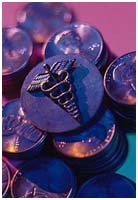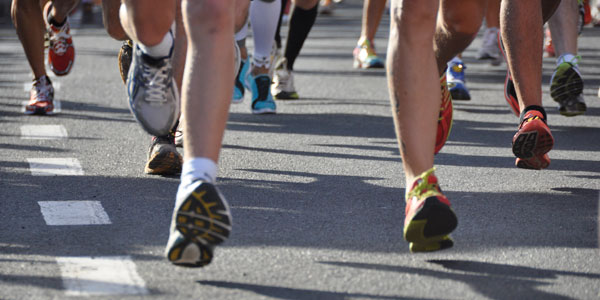On landing, the foot distributes the weight and prepares to propel the leg forward via various mechanisms that contribute to the movement of running. Before this takes place the normal anatomical structure of the foot can go through various deviations which are appropriate to each individual. [Read more…]
Causes of Foot Injuries
The causes of foot injuries in running are factors which are influenced by the distribution of load, including anatomical factors, body weight, shoes, surface, training program and technique. [Read more…]
To reduce injury risk, you need to minimise impact
Reduce Injury. It should be each runner’s common goal to reduce the risk of injury, one of the solutions is to minimise impact.
Injuries are the pits. The physical part is bad enough, but mentally they can be even worse. Half of your brain rationally advises caution while the other half screams, “Get out the door!”
 To control injuries, whilst you are in heavy training for a race like the Old Mutual Two Oceans Marathon, it’s not enough to just rest; you need to understand their root causes. Preventing injuries is about increasing the ability of your tissues to tolerate a force repeatedly, or decreasing the cumulative shock those tissues must withstand. I believe that most overuse syndromes will respond to rest, training modification and a change in the running surface or shoe. Rest is self-explanatory. Let’s look at how to prevent injuries by adjusting your running surface and terrain, shoes and mileage.
To control injuries, whilst you are in heavy training for a race like the Old Mutual Two Oceans Marathon, it’s not enough to just rest; you need to understand their root causes. Preventing injuries is about increasing the ability of your tissues to tolerate a force repeatedly, or decreasing the cumulative shock those tissues must withstand. I believe that most overuse syndromes will respond to rest, training modification and a change in the running surface or shoe. Rest is self-explanatory. Let’s look at how to prevent injuries by adjusting your running surface and terrain, shoes and mileage.
Our bodies didn’t evolve to withstand hundreds of kilometres of pounding on the hard, uniform surfaces of pavements and roads. Although these may be the most convenient surfaces available, you’re inviting shin splints, stress fractures and other injuries by training on them exclusively. A better strategy is to switch to softer surfaces such as dirt, grass or gravel as much as possible. If you are a Capetonian runs through Cecilia plantation to the “Nek” or Jack’s track in Newlands forest provide for a friendlier surface as well as a more variable ride, which reduces the repetitiveness of the load. [Read more…]
Shin Splints Treatment
 This article covers Shin Splints and is provided by Teri Burgess, resident Physiotherapist, from time-to-run Cape Town
This article covers Shin Splints and is provided by Teri Burgess, resident Physiotherapist, from time-to-run Cape Town
Shin Splints Definition and Treatment
Definition: Inflammation of the muscle attachments and interosseous membranes to the tibia (shin bone) on the inside of the front of the lower leg. Note: “shin splints” is a very widely used phrase and can refer to several lower leg injuries. The focus of this description is specifically on the inflammation described above. [Read more…]
Injury prevention tips
9 handy tips to assist in injury prevention:
( 1 ) Avoid training when you are tired. Tired muscles provide inadequate support for tendons, ligaments, and bones, increasing the risk of strains, sprains, and stress fractures. [Read more…]






















